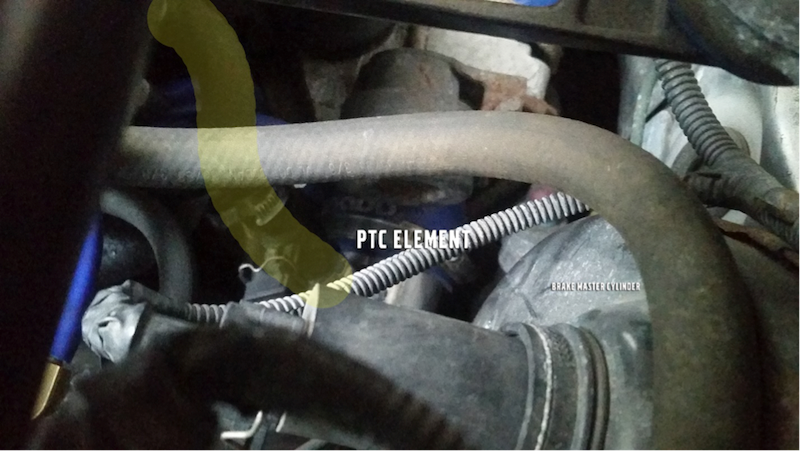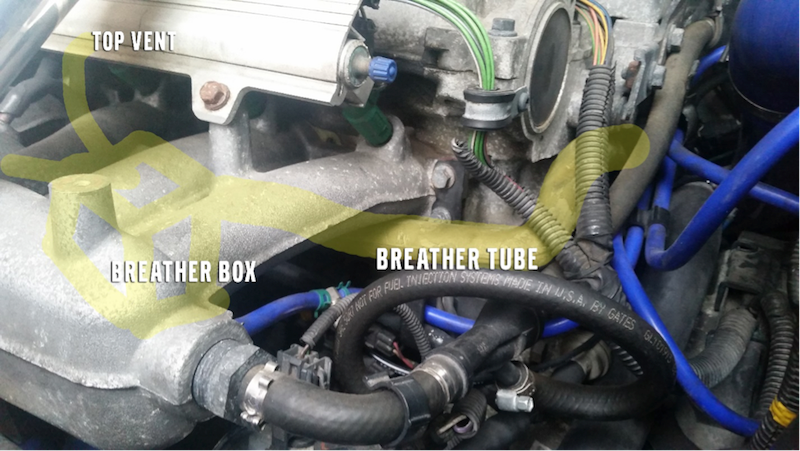The PCV system is often neglected, which can lead to some serious problems. The vent system serves to move fumes from the hot oil, being used to lubricate everything inside the engine, to the intake system to be burned off harmlessly. When the system is clear and working as it should you would never notice this, nor would it ever be cause for concern.
Diagnosis
Signs of the system being clogged are pretty straight forward. A smoking dipstick is a telltale sign and can mean the system isn't venting properly. Those fumes should be pulled through the intake from the vacuum generated by the turbo and intake. A great test for a non functioning PCV system is to place a glove or ballon over the dipstick tube with the engine running. On the same wavelength, another more destructive issue that is indicative of a clogged system is a dip stick that pops out. I myself had this happen on a long highway trip and it resulted in lots of oil splashing out of the tube and onto the hood blanket. One might think that holding this tube down with some kind of strap would be a temporary fix for this, not so. Venting pressure here works to save the rear main seal, the seal which surrounds the output side of the crankshaft. Another telltale sign of an issue is a lot of oil and sludge surrounding the PTC element on the intake tube.

Replacing the system takes a matter of hours and while there are some tight spaces to work in, with a bit of patience it can be done with only very basic tools. A good tip for changing these systems is that on a 99+ model, the service manual calls for removal of the alternator and thus the serpentine belt. While it doesn't have to come out completely it is very helpful for refitting the tricky banjo bolt located underneath the intake plenum.

On newer 99+ vehicles it is not always necessary to replace the breather pipe that goes from the box to the intake pipe. These are made of metal and can be cleaned and reused without much hassle. It can also result in some savings when it comes to replacement. While it's possible to reuse the tubes on a '98 or earlier model, it isn't recommended. The plastics (as im sure you’ve encountered already) become brittle over time and even though it might be fairly clean, you can break them when servicing the system.
Cliff's notes: Always replace the entire breather system on a -98 vehicle, but it's okay to reuse the breather-to-intake pipe on '99+ vehicles.

What can be done to prevent premature or any failure of the system? Regular maintenance and high quality oil. Clogs of the pcv system are most often a direct result of neglected oil changes and or poor oil quality. When the oil reaches peak temperatures it can begin to break down leaving behind the nasty sludge. This sits in both the outlet of the breather box and or the PTC element at the intake side.











